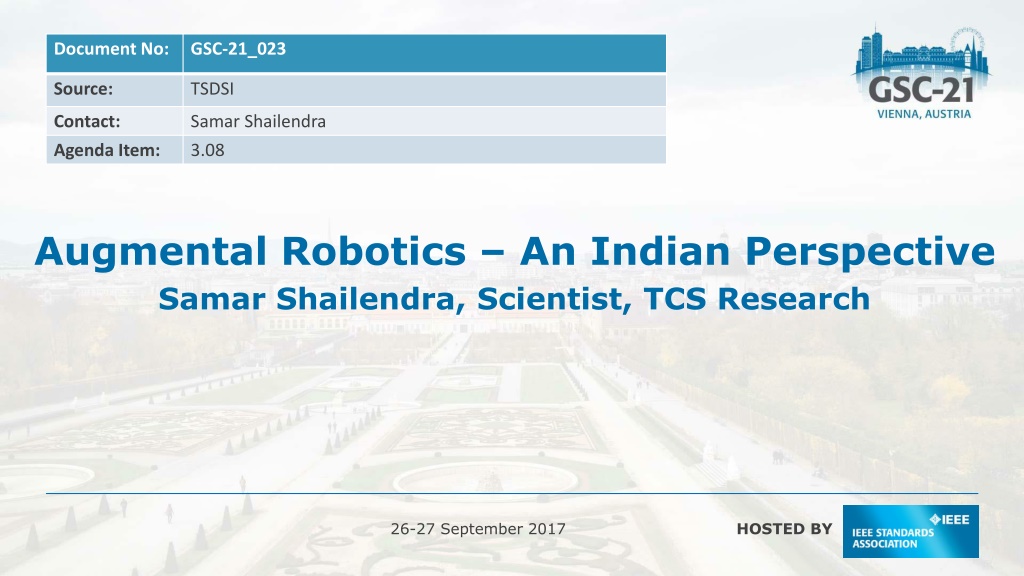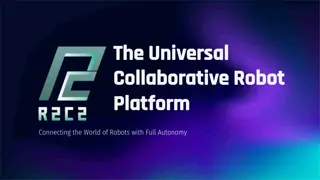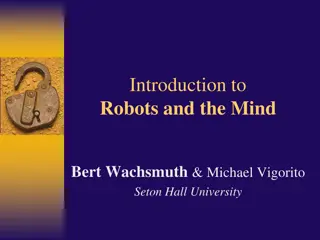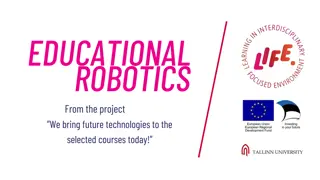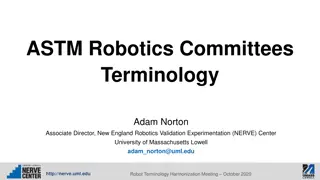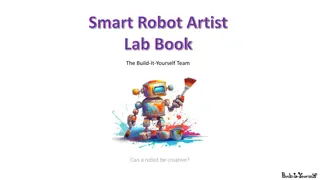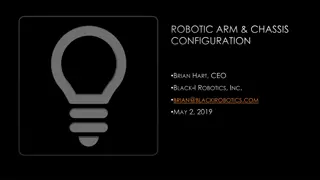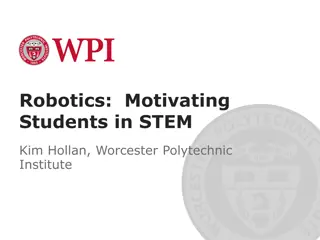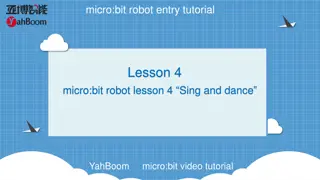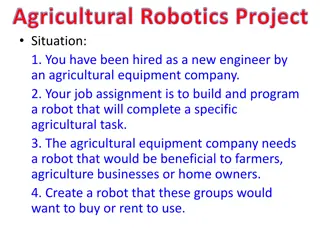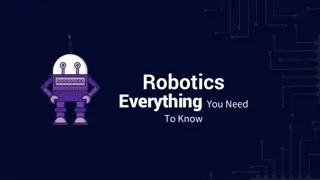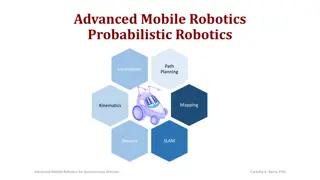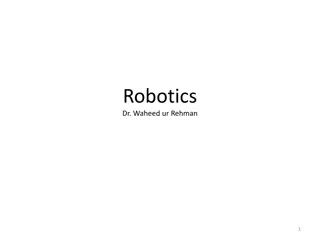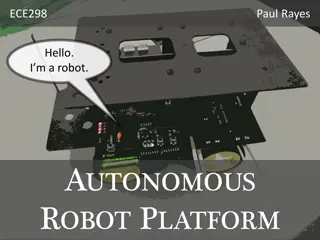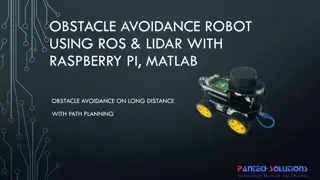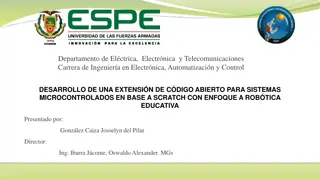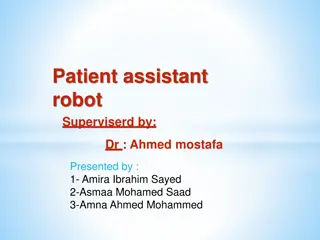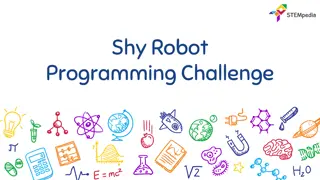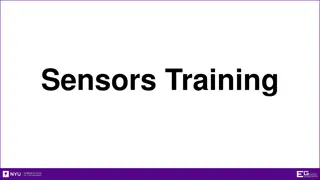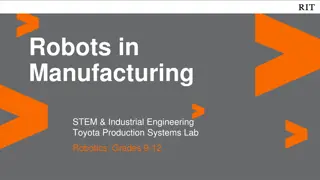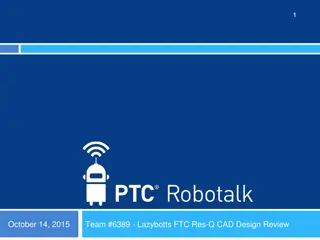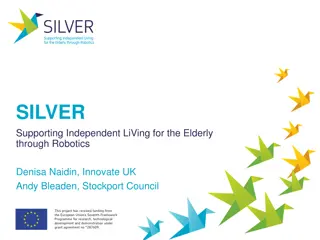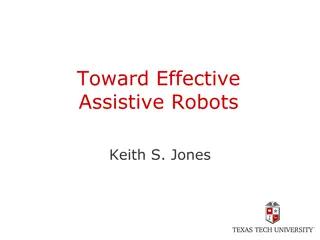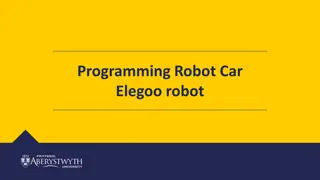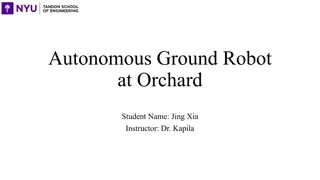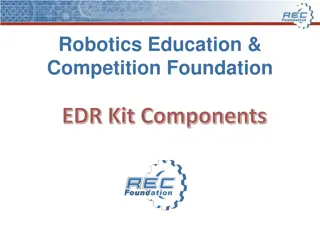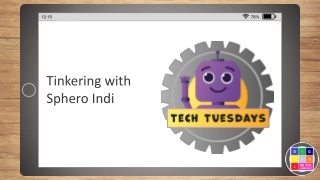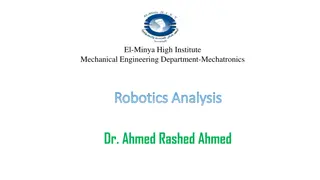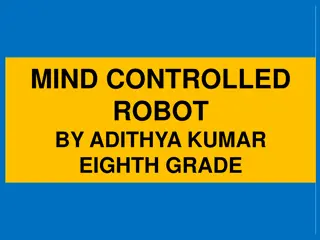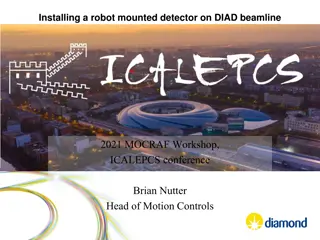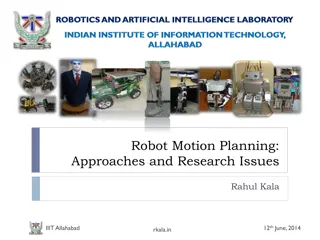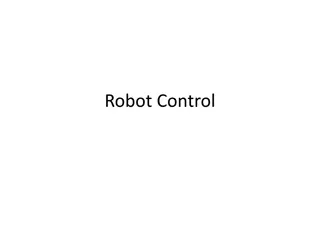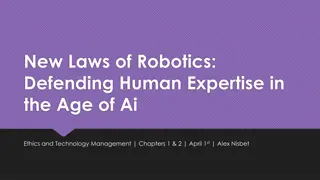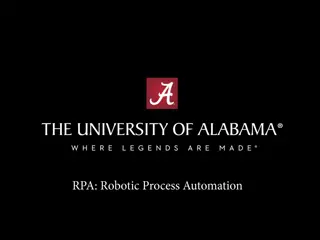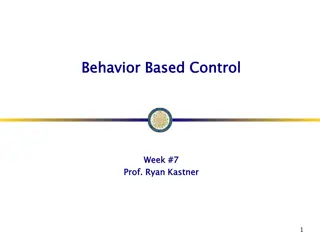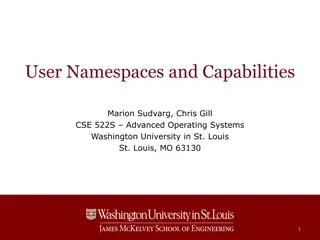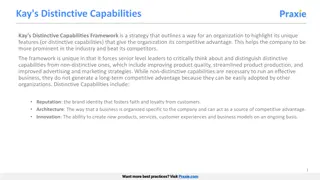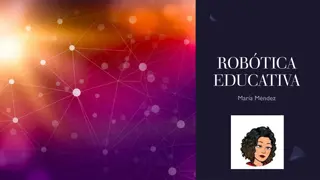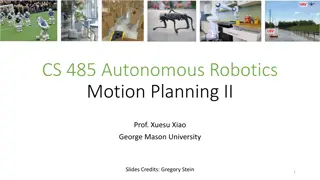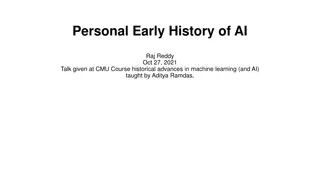Augmental Robotics: Enhancing Human Capabilities Through Robot Collaboration
Augmental Robotics (AuR) focuses on robots working alongside humans to improve efficiency in various sectors like industry, healthcare, and remote services. Different scenarios showcase how robots can work independently, collaborate with each other, and assist humans in tasks. Key challenges include knowledge representation, communication, safety, trust, and networking for seamless integration of robots into human environments.
Download Presentation

Please find below an Image/Link to download the presentation.
The content on the website is provided AS IS for your information and personal use only. It may not be sold, licensed, or shared on other websites without obtaining consent from the author. Download presentation by click this link. If you encounter any issues during the download, it is possible that the publisher has removed the file from their server.
E N D
Presentation Transcript
Document No: GSC-21_023 Source: TSDSI Contact: Agenda Item: Samar Shailendra 3.08 Augmental Robotics An Indian Perspective Samar Shailendra, Scientist, TCS Research 26-27 September 2017 HOSTED BY
Augmental Robotics (AuR) Robots perform certain tasks to improve the human efficiency and reduce human errors. Robots co-exist, and augment humans to enhance their capability in performing certain tasks. Robots are able to infer their environment and take their autonomous decisions. Robots are not necessarily replacing Humans or taking away their jobs ! Use Cases - Industry 4.0 (Smart Warehouse, Smart Factories etc.), Tele- diagnosis and Tele-surgery in remote areas. 26-27 September 2017 26-27 September 2017 Pg 2 |
Augmental Robotics (Scenario-1) Robots Working standalone Robotic picking and dropping inside warehouse/assembly line. Robotic arm carrying out a reparative task without any intervention. Requires continuous instructions and monitoring by humans! 26-27 September 2017 Pg 3 |
Augmental Robotics (Scenario-2) Robot to Robot collaboration Robots providing tele-health services in remote areas. Robots collaborating in Manufacturing and Assembly Line. Perform a specific task based on static instruction and supervision by humans ! 26-27 September 2017 Pg 4 |
Augmental Robotics (Scenario-3) Robot to Human collaboration Robots and Humans are lifting a ladder together. Robot is assisting human in executing repairing task. Robots and humans need to understand and interact with each other! 26-27 September 2017 Pg 5 |
Requirements & Challenges [1/2] Knowledge Representation Affective Model to represent emotional state Unified representation of learning, emotions, senses is essential. Unambiguous sharing of information and interoperability among robots and robot to human is critical ! Effective language for Communication Safety and Trust The operating environment must be safe for humans. For human-robot collaboration, the robotic system must be utmost trustworthy. 26-27 September 2017 Pg 6 |
Requirements & Challenges [2/2] Networking & Communication Different types of data with different QoS requirements e.g. Telematics, Control, Perception. Co-existence and interoperability of multiple heterogeneous devices and communication technologies. Should be able to provide all of above using public infrastructure ! Inter Robot Communication 26-27 September 2017 Pg 7 |
AuR Challenges Knowledge Representation Robots and Humans need to understand each other What is Knowledge ? How that can be represented, stored, retrieved and exchanged efficiently ? Understanding of Robots by the Humans makes it even more challenging ! Semantically connected Knowledge Representation I know it! I saw you cleaning !! Robots must autonomously learn, represent and adapt to the knowledge in real time. Requires semantic link between knowledge items. Must be able to share this knowledge with peers. 26-27 September 2017 Pg 8 |
AuR Standardization Effort Knowledge Representation should be able to address the aspects of Knowledge about environment and planning for the same Understanding of human colleagues and other co-workers based upon their capabilities Must be able to represent gestures, signs and expressions of human colleague Still an open area of research IEEE Standard Ontologies for Robotics and Automation (IEEE SA - 1872- 2015) Thing-to-thing research group at IRTF (t2trg) 26-27 September 2017 Pg 9 |
AuR Challenges Safety and Trust Need to re-define the safety and trust for collaborative environment In such environment, Guidelines are required for Monitoring and Action Hand and Facial Guiding Speed and Distance handling Force, Power and Thrust Additional safety and fault tolerance in the system to safeguard the human colleague is of paramount importance ! 26-27 September 2017 Pg 10 |
AuR Standardization Safety and Trust Guidelines For Industrial Robotic Environment Multiple standards related to Industrial Robotics by International Organization for Standardization (ISO) ISO 10218-1:2011 ISO 10218-2:2011 Different types of environment (e.g. electronic, chemical etc.) has different safety requirements Provides classification for various Safety Hazards More elaborate Safety guidelines to be defined for co-existence of robots in Social Environment ! 26-27 September 2017 Pg 11 |
AuR Challenges Networking Diversity in Communication Requirements Diverse QoS, Latency, Bandwidth and Reliability requirements. Interoperability of diverse technology and devices. Current Network is not apt for Reliable, High bandwidth, Low Latency comm. For complete AR/VR applications BW : ~1-5 Gbps, End-to-end latency : <5ms. Machines and Humans operate in different timescales. Limits are imposed by Physics on the distances ( < 150 km for 1ms latency) Can this be run on Public Network infrastructure ? Essential for developing Nations like India. Introduces additional challenges of scale, infrastructure, scheduling, fairness etc. 26-27 September 2017 Pg 12 |
AuR Standardization Networking Multiple Ongoing Standardization efforts to support AuR use-cases !! Haptics IEEE Standards Association Video Local Netwo rk P1918.1 - Tactile Internet Haptic Codecs for Touch, Feel and sense. Decrease volume and Increase reliability. IEEE 802.1 Time Sensitive Networking (TSN) Velocity Force Tele-Operator Operator TSN standards are developed for low latency and deterministic communication to satisfy industry requirements (For L2 devices). Industrial Internet Consortium (IIC) has developed a testbed. 26-27 September 2017 Pg 13 |
AuR Standardization Networking Deterministic Networking (DetNet) IETF Expert/Doctor Time synchronization of 1 s, Packet Error Rate (<10-8). Guaranteed end-to-end latency and bounded jitter. Dynamic reliability and resource reservation based upon the application context ! 3GPP/TSDSI AuR use-cases for 5G and beyond For India Tele-health is one of the most promising use-case. 60% (~780 million) without access to basic healthcare. Frugal 5G has been proposed to connect remote areas Requires high bandwidth (several Gbps), Low latency ( <5ms), Low PER (<10-7) and ultra high reliability (<3.5 sec of outage per year). Robotic Edge at Patients End 26-27 September 2017 Pg 14 |
Concluding Remarks Critical requirements and KPIs such as semantics, latency, data priority etc. need to be defined before Augmental Robotics to be feasible. Representation of Human Senses and Emotions require significant research. Standardization is essential for interoperability of heterogeneous devices and technologies. Aspects of Computing, and Security etc. also need to be addressed and standardized ! Developing Countries like India poses unique challenges in terms of infrastructure, cost and scale !! 26-27 September 2017 Pg 15 |
Thank you For more information, please contact: Dr. Samar Shailendra s.samar@tcs.com Affiliation Name: TSDSI www.tsdsi.org 26-27 September 2017 Pg 16 |
